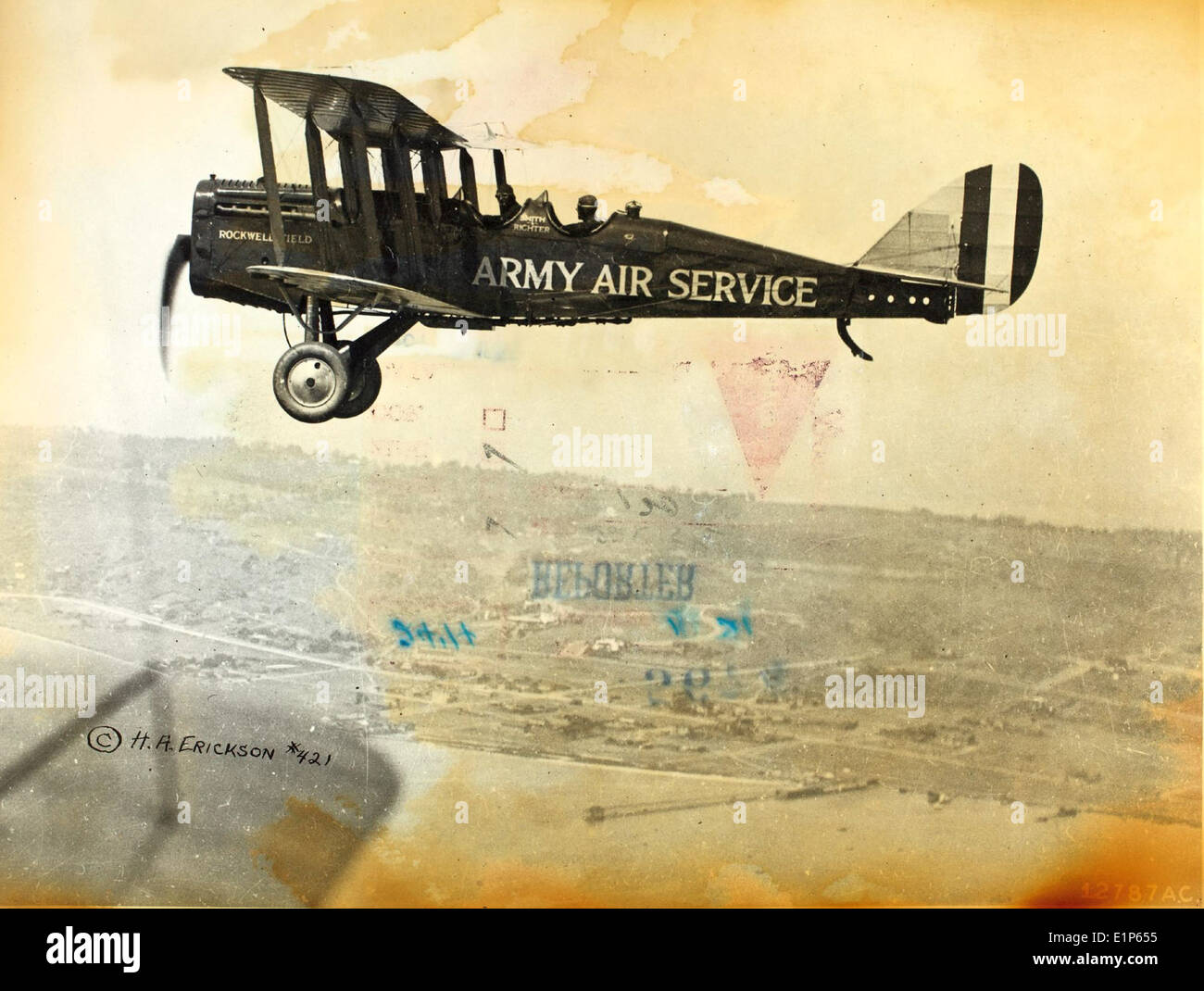

When the retrofitted de Havillands (now known as DH-4B) were returned to service, the improvements proved enormously successful. More seriously, the altimeter registered 1,000 feet for each 1" around the scale, making it useless below 1,000 feet. Unfortunately, the pipes, placed on the bottom wing's leading edge, were regularly filled with mud. Air pressure through a metal pipe activated the airplane's air speed indicators. When flying east, the compass could oscillate from east to 90-degrees north. The airplanes compass was notoriously unreliable. The DH-4 instrument panel also had problems. The landing gear was repositioned and larger wheels were installed. To make the planes more durable, the linen fabric fuselage was replaced with plywood sheets over wood struts. The exhaust stacks were extended beyond the cockpit, so pilots would no longer be blinded by their own exhaust fumes. The cockpit was moved to the rear and was rimmed with padded leather for cushion in rough landings. In January 1919, the DH-4s were removed from service for extensive renovation work. Among those killed in the early de Havilland airmail flights was Carl Smith, who stalled out over Elizabeth, New Jersey, while testing a DH-4 on December 16, 1918. The planes quickly gained a macabre nickname-flaming coffins. Minor crashes turned deadly, as entangled pilots were burned alive. Pilots were too easily trapped between the engine and the mail compartment. The most precarious design flaw was the placement of cockpit. Like most of the 2,500 fighter planes built in the United States by 1918, few DH-4 aircraft even saw battle.ĭeHavilland DH-4 at the Omaha, Nebraska, airfieldĪlthough the airplanes range (350 miles) and load capacity (500 pounds) were good, de Havillands were not suited for the rigors and demands of airmail service, having been built for high-altitude military observation use. Created by Geoffrey de Havilland, these planes had been built both in England and the United States during the last years of the war. In 1918 the Post Office Department requested 100 de Havilland airplanes, model DH-4, from the army. In June the Post Office Department, using its own pilots, took over the service. For these first flights, pilots used Curtiss JH-4 (Jennies) aircraft.

and New York City which began on May 18, 1918. Army pilots flew the first airmail trips, including the inaugural routes between Washington, D.C. For airplanes, postal officials turned to the military which turned over more than just aircraft. It is currently on loan to the National Postal Museum from the National Air and Space Museum.įrom 1918-1926, the Post Office Department operated the nation's first airmail service. This de Havilland (model DH-4B) is part of the museum's centerpiece atrium exhibit, Moving the Mail.


 0 kommentar(er)
0 kommentar(er)
